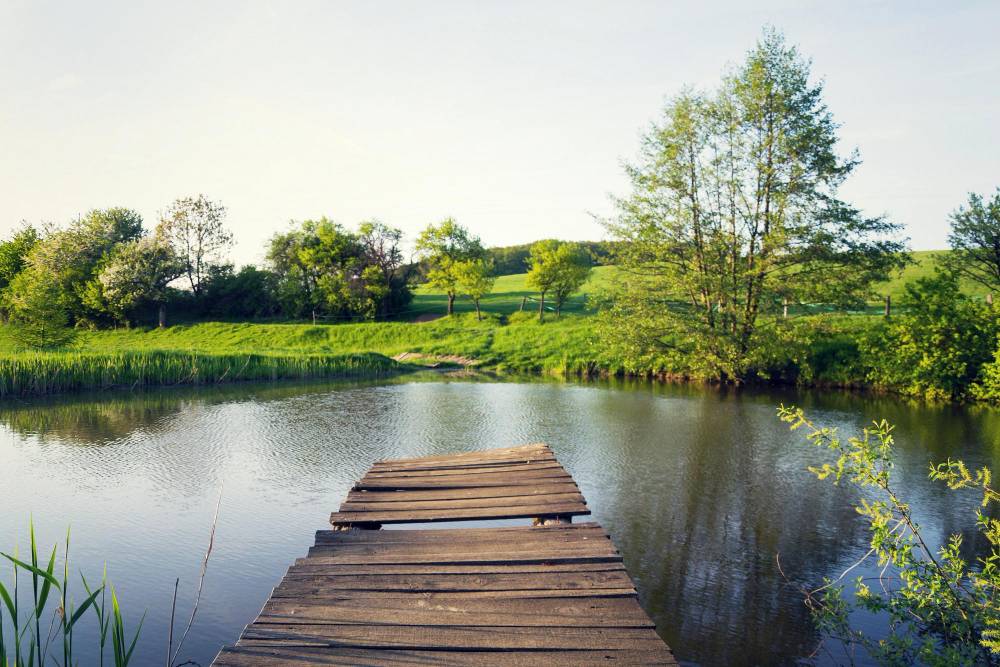
Calm water, maybe a few birds swooping down, and a peaceful, natural vibe may look stunning on the surface, but appearances can be deceiving. A lake or pond that looks clean might still be struggling with unseen issues that affect its long-term health.
If you’re a property owner with a lake or pond, it’s important to know the signs that show whether your water is in good condition or if it needs a little extra TLC. In this brief article brought to you by the lake and pond maintenance professionals at Aquatic Restoration, we share some key ways to tell if your lake is healthy.
If you’d rather hire a retention pond maintenance specialist, then call Aquatic Restoration to schedule a convenient appointment. We’re happy to set up a face-to-face consultation or on-site visit for as soon as possible.
While water clarity is important, having water that’s too clear can actually be a warning sign. A healthy lake should have some level of organic activity which naturally clouds the water a bit. Think algae and plant life. Too much clarity can mean the water lacks these essential organisms.
What you should look for instead is moderately clear water; you should see into the lake but still notice some movement and life below the surface. If the water is overly murky or too clear, it’s a sign that something is off-balance.

A healthy lake will have a good mix of aquatic plants along the shoreline and submerged in the water. These plants serve multiple purposes: they provide oxygen, filter nutrients, offer habitat for fish and other wildlife, and prevent shoreline erosion. However, too much plant growth can be a problem.
Take note of the plants in and around your lake. If the lake looks like a dense jungle of one or two types of plants, then it might be time to step in and manage the overgrowth. Invasive species can choke the pond and harm the ecosystem!
One of the easiest ways to tell if your lake is healthy is by observing the wildlife it attracts. A vibrant and healthy lake should be teeming with fish swimming just below the surface to frogs hopping along the banks and dragonflies darting through the air. You should also notice birds and other wildlife frequenting the area.
If you notice a decline in wildlife activity, it could be a sign that the lake’s health is declining. Poor water quality, low oxygen levels, or harmful algae blooms can drive away animals that would normally thrive in and around the water body.
Algae are a natural part of any pond or lake ecosystem. In small amounts, they provide oxygen and serve as food for aquatic creatures. However, thick, green mats of algae covering the surface is a problem. You want to see some algae, but it should be sparse and balanced.
Fish, plants, and microorganisms in your lake or pond need oxygen just as we do. While we get our oxygen from the air, they get theirs from good ole’ H2O. Signs of low oxygen include fish gasping at the surface, foul odors, or an abundance of anaerobic bacteria. Installing an aeration system (like a fountain or diffused aerator) is an excellent way to boost oxygen levels.
By monitoring the clarity of your water, tracking plant and algae growth, keeping an eye on wildlife activity, and testing oxygen levels, you’ll have a well-rounded view of your lake’s health. It’s not as simple as it sounds, so call Aquatic Restoration if you’d like an expert opinion and/or assistance. Our team is on standby to take your call or message at any time of the day.
Sediment buildup is one of the biggest threats to lakes and ponds. It not only impacts water quality but also…
If you own a pond or lake, you know that proactive maintenance is an integral part of keeping the…
If you’ve ever walked outside and noticed your lake suddenly turn a murky shade of green, you’re not alone. Many…
Lakes are vital ecosystems that support wildlife, protect water quality, and enhance the quality of life for surrounding communities. Whether…
If you’re reading this, there’s a good chance you’re sick and tired of dealing with aquatic weeds that never…